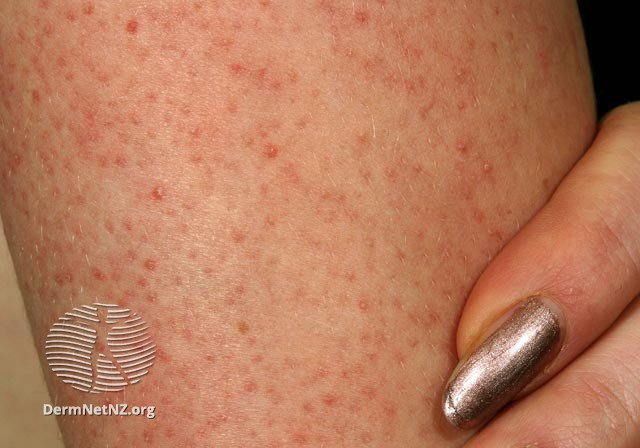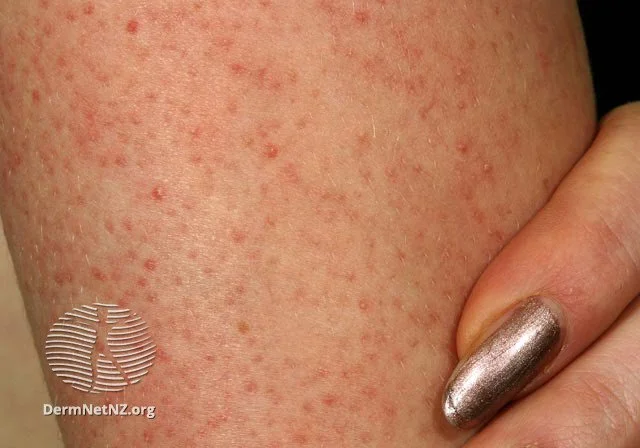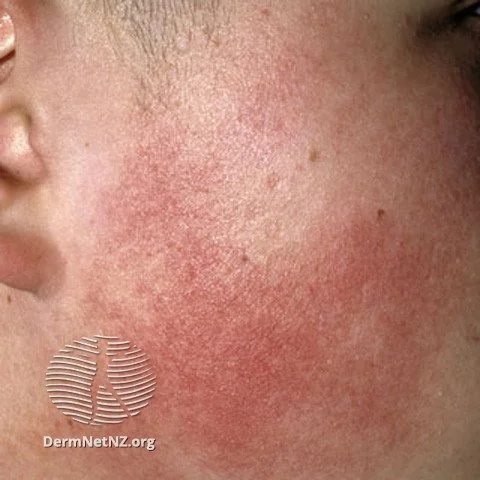
Keratosis Pilaris
An example of keratosis pilaris, which many people have on the back of the arms or legs, and looks like rough, scaly, red, “chicken-skin” bumps.
Credit: DermNet NZ
What is keratosis pilaris?
Keratosis pilaris (KP) is a prevalent skin condition where keratin, a protein found in the skin, obstructs hair follicles. This leads to the emergence of small, often rough, bumps resembling goosebumps. Typically observed on the upper arms, thighs, cheeks, and buttocks, these bumps are benign but can sometimes distress individuals concerned about their aesthetic appeal.
What causes keratosis pilaris?
The primary culprit behind keratosis pilaris is the abnormal accumulation of keratin in the upper part of the hair follicle. This aggregation forms a hard plug, occasionally leading to ingrown hairs. There's a hereditary component to this condition, with a significant likelihood that children of affected individuals might also exhibit symptoms.
What are the symptoms of keratosis pilaris?
Manifesting as minute, rough, skin-toned bumps, keratosis pilaris might also present with a slight pink or darker hue around these bumps. Their prominence can amplify during drier months or in dry environments. Some individuals might experience itchiness, and scratching can intensify the redness around these bumps.
How do I treat keratosis pilaris?
Although keratosis pilaris doesn't necessitate treatment, individuals might seek remedies due to aesthetic concerns or emotional discomfort. Over time, many patients experience a natural alleviation of symptoms. For those seeking to improve the skin's texture, the following treatments might prove beneficial:
Using non-soap cleansers to avoid exacerbating dryness
Applying over-the-counter exfoliants
Moisturizing with creams infused with keratolytic agents like urea, lactic acid, glycolic acid, or salicylic acid
Using topical retinoids, e.g., tretinoin
Administering topical diclofenac
Undergoing pulse dye laser procedures
Opting for laser-assisted hair removal
KP on the sides of the face can present with very bright red color, and can be hard to treat.
Credit: DermNet NZ
KP on the eyebrows can sometimes cause hair loss in the affected area.
Credit: DermNet NZ



